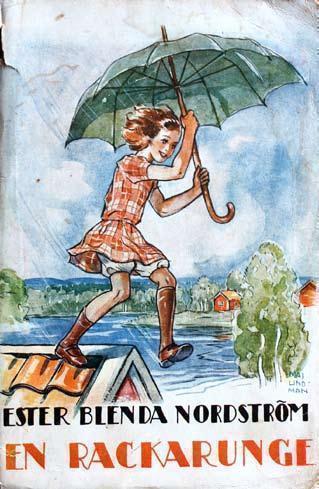My hosts in Dalarna had a fantastic library of children’s literature spanning the interests of three generations. What a curious thing to see the Sweet Valley High paperbacks of my own childhood on the same shelf as authors like Ester Blenda Nordström!
Nordström’s series of children’s books, starting with En rackarunge, is purported to be an unacknowledged source of inspiration for Astrid Lindgren. The rackarunge in question—Ann-Mari—bears a resemblance to Pippi Longstocking in character as well as appearance, and predates the first Pippi book by some years. Admittedly, it’s hard to prove these things either way, so who’s to say for sure.
The Swedish half of the couple saw me paging through the book during my downtime and remarked on the differences between children’s literature now and then.
“I tried reading some of those older books to the kids when they were small, and it’s just a completely different experience. They’re so slow, nothing happens, there’s so much description. Books these days, there’s always something happening. It’s such a different energy.”
Indeed. En rackarunge is also more of a short story collection than a novel. Each chapter is a self-contained little adventure, although there are some recurring characters and situations throughout that (kind of) tie all of the adventures into one loose story. Not to mention it touches on pretty dark stuff for a children’s book of today: one of the red threads throughout the book is Ann-Mari’s friendship with a Josef, young man newly released from prison for murdering his physically and emotionally abusive uncle. He’s only scraping by at the margins of society when Ann-Mari first meets him, a total outcast from his hometown. Nordström’s reportage consistently highlighted the marginalized and the suffering, from her initial breakthrough as an undercover journalist investigating labor conditions for domestic help to her condemnation of the brutality of the bullfights she attended in Spain and her advocacy on behalf of destitute Finns starving near to death in a famine. Josef’s arc in the last third or so of the book is another culmination of Nordström’s concern for the downtrodden, and of course it’s Ann-Mari who decides to help him.
Why did Pippi become such a mainstay, while Ann-Mari vanished into obscurity?

